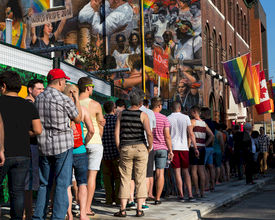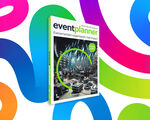If you want to start your event with a disaster, force your attendees to go through endless waiting lines and give them stressful check-in procedures. Also known as accreditation, the event check-in describes the access (by issuing credentials, for example) you are giving to your event and to specific areas at the event.
As event professional Julia Rutherford Silvers argues, "The professional event coordinator must determine the appropriate level and type of accreditation system to meet the security needs of the event, event stakeholders, and event audience. The system selected must be integrated into the site plan, the budget, and the operations. Appropriate policies and procedures must be established, materials must be procured, and training for staff must be provided."
Rutherford Silvers continues by highlighting, "The type and scope of your accreditation system will be determined by the type and purpose of the event, as well as the need to control access to certain areas, people, activities, information, equipment, or materials." If not executed correctly, the check-in procedure may turn into chaos, diminishing the positive impact of your event. Your attendees will be dissatisfied and less eager to enjoy their experiences, and the quality of the event will suffer significantly. To keep this from happening, check out the following tips on how to set up an efficient check-in system.
Tip 1. Encourage the attendees to print their badge before the event
Long waiting lines occur when identifying and accrediting each person takes longer than it should. Imagine this: The attendee approaches the check-in desk, identifies himself or herself, waits for you to print and fold the badge, and only then enters the event venue. Obviously, to expedite this procedure, you can easily install multiple check-in desks.
However, there’s another trick you can use (and save money on personnel): Encourage your attendees to print their badge before the event. By having their identification badge on hand, attendees can just directly enter the venue or approach the check-in desk for the plastic badge cover and goody bag. This will shorten the waiting time, and ensure an easy flow of guests. To convince your attendees to generate badges before the event, you can always specify that printing the badge in-situ will cost an additional fee.
Tip 2. Set up an automatized check-in system
Instead of installing multiple check-in desks at the entrance, you can always set up an automatized system for accreditation. For example, you can install a series of check-in machines that will identify the attendees and print the badges instantly. This process can be guaranteed by informing the guests that they’ll have to download the personal QR identification code.
Subsequently, they’ll approach the check-in machine, scan the code, and get their badge. Of course, it’s recommended to provide assistance, so if you decide to use the automatized check-in machines, make sure to assign a few volunteers to accompany the attendees along the process.
Tip 3. Establish multiple flow lines
If you want to run an efficient check-in dynamic, you must facilitate various entrances and flow lines. In the case of big events, search for venues that provide multiple escalators and access areas. This will speed up the accreditation procedure, and people won’t have to wait very long to enter the event space.
Tip 4. Provide badges with special codes
Depending on your event type and goals, the check-in procedure may continue after the general accreditation procedure. For example, let’s say you are planning a trade show, and depending on the attendee types, some guests will have access to the knowledge sessions and some won’t.
In this case, you’ll have to assign people who will check each attendee’s identity before letting him or her access the knowledge area. To make this procedure move as quickly as possible, make sure to generate badges with special codes that will indicate each attendee’s access rights. Then, the volunteers may scan the code of the event guests who want to assist at the knowledge sessions.
Tip 5. Consider adopting face recognition technology
Although new and not widely used in the event industry, face recognition will define the future of check-in dynamics. Using different biometric technologies, a face recognition system will allow you to identify automatically the attendees. This may accelerate the accreditation procedure and facilitate the attendee flow.
Wrap-up
One of the first interactions with the event environment is the check-in desk. That’s why it’s important to provide a stress-free accreditation experience for your attendees, without long waiting lines or confusing identification procedures.







